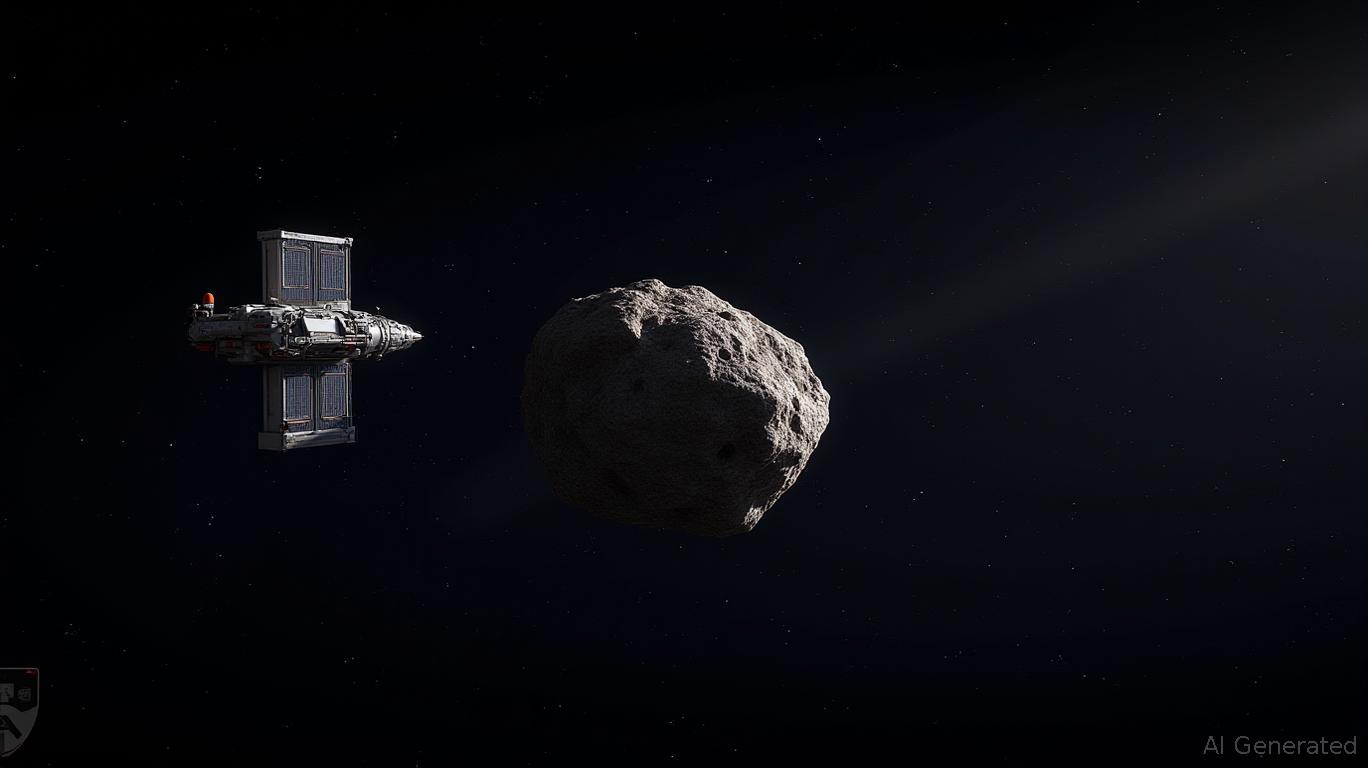Asteroid Mining: The Next Frontier for Resource Extraction and Investment
The recent close approaches of near-Earth asteroids, such as 2024 YR4 and 2025 BP6, have underscored the dual urgency of planetary defense and the vast potential of space resource utilization. These events, combined with rapid technological advancements and shifting policy landscapes, are positioning asteroid mining as a transformative investment opportunity in the aerospace sector. With market projections forecasting explosive growth—from $1.37 billion in 2023 to $3.79 billion by 2028—the sector is primed for investors seeking exposure to long-term, high-reward opportunities.
Technological Catalysts: From Detection to Extraction
The detection of asteroids like 2024 YR4, which briefly held a 3.1% chance of impacting Earth in 2032, has driven significant investments in detection systems. NASA's NEO Surveyor, an infrared space telescope set for launch by 2027, will revolutionize asteroid tracking by identifying smaller, darker objects that evade current optical systems. Meanwhile, the James Webb Space Telescope (JWST) is already being repurposed to analyze asteroids' composition, as seen in its 2025 study of 2024 YR4's size and trajectory.
This technological progress is mirrored in mining ventures. AstroForge, a leader in asteroid prospecting, launched its Odin spacecraft in February 2025 to assess asteroid 2022 OB5 for platinum-group metals. Though initial communication issues delayed data retrieval, the mission highlights the feasibility of extracting resources like rhodium (priced at $183,000/kg in 2025) that are critical for renewable energy technologies. Similarly, Deep Space Industries (DSI) is advancing its MicroGravity Foundry, a 3D printer capable of transforming asteroid-derived metals into usable components, reducing reliance on Earth-based supply chains.

Policy Developments: Navigating Legal Frontiers
The U.S. has been at the forefront of legal frameworks enabling asteroid mining. The 2015 Commercial Space Launch Competitiveness Act (SPACE Act) grants U.S. citizens ownership rights over resources extracted from asteroids. However, ambiguities persist—such as defining “commercial recovery” and whether in-situ land claims are permissible. In March 2025, President Trump's executive order leveraged the Defense Production Act to fast-track domestic mineral production, including space resources, by expediting permitting and federal land utilization. This directive underscores the strategic importance of space-derived materials for national security and economic resilience.
Globally, the Artemis Accords (signed by over 20 nations by 2025) reaffirm that resource utilization aligns with the 1967 Outer Space Treaty, which prohibits national appropriation of celestial bodies. Yet, international coordination remains fragmented, with Luxembourg and the UAE also enacting space resource laws. Investors should monitor ongoing debates over liability frameworks and equitable distribution of resources to mitigate regulatory risks.
Commercial Potential: A Gold Mine in the Sky
The asteroid mining market's 22.3% CAGR (2023–2028) reflects surging demand for rare Earth metals and platinum-group elements, which are vital for electric vehicles, solar panels, and advanced manufacturing. Key players like Planetary Resources and iSpace Inc. are scaling operations, while Blue Origin's acquisition of Honeybee Robotics in 2022 highlights industry consolidation.
The sector's growth is further fueled by reduced launch costs and satellite deployment booms, which lower the barrier to accessing orbital resources. Companies like Origin Space (NEO-01 satellite) are pioneering space debris cleanup—a precursor to asteroid mining—while also advancing asteroid defense capabilities.
Investment Considerations: Risks and Rewards
While the sector's potential is undeniable, risks abound:
- Technological Hurdles: Missions like AstroForge's Odin underscore the challenges of deep-space communication and robotic precision.
- Legal Uncertainty: Ambiguities in the SPACE Act and international treaties could delay projects or spark disputes.
- High Capital Costs: Extracting resources from asteroids requires billions in upfront investment, with returns years away.
Investment Strategy:
- ETFs and Indices: Consider exposure to aerospace ETFs like the ARK Space Exploration ETF (ARKX) or the Global X Space Exploration & Tech ETF (SPCE), which include companies in adjacent sectors.
- Private Equity and IPOs: Track companies like AstroForge (funded with $13M in 2022) and Planetary Resources for potential IPOs or M&A activity.
- Long-Term Horizon: Treat asteroid mining as a decades-long play, focusing on firms with scalable tech (e.g., DSI's 3D printing) and partnerships with governments or established aerospace players.
Conclusion: The Final Frontier's Economic Revolution
The confluence of asteroid detection milestones, policy tailwinds, and technological breakthroughs positions asteroid mining as a cornerstone of the next space economy. While risks like regulatory delays and technical failures loom, the sector's potential to supply rare resources and fuel sustainable space exploration makes it a compelling bet for long-term investors. As companies like AstroForge and DSI edge closer to extraction, the question isn't whether asteroid mining will succeed—but when investors will reap the rewards of backing its pioneers.
Jeanna Smialek is a pseudonym for the author.

Comments
No comments yet